|




|

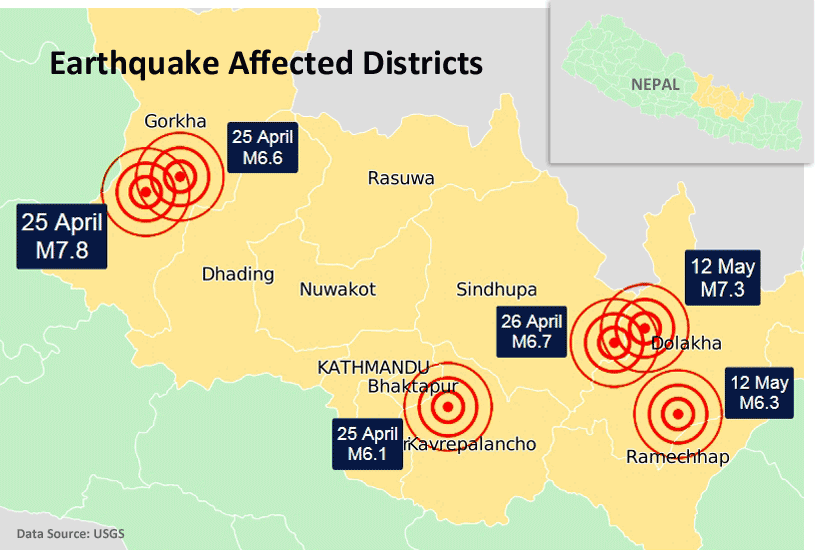 Dear *|FNAME|*,
The earthquake of 25th April has killed thousands of individuals. It has injured many more and destroyed villages, towns and farms. Despite the resilience and resourcefulness of the people of Nepal the country faces a struggle to regain normality, particularly as aftershocks continue to rumble, landslides are frequent and the monsoon approaches.
Dear *|FNAME|*,
The earthquake of 25th April has killed thousands of individuals. It has injured many more and destroyed villages, towns and farms. Despite the resilience and resourcefulness of the people of Nepal the country faces a struggle to regain normality, particularly as aftershocks continue to rumble, landslides are frequent and the monsoon approaches.
HART's experiences are noted here as, alongside other governmental bodies and other NGOs, it reeled, then regrouped and then used its resources to help wherever it could.
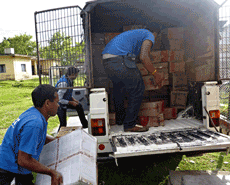
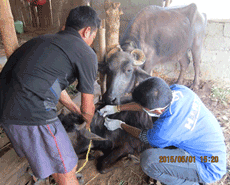
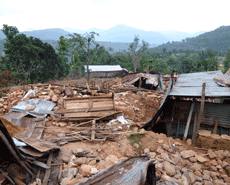

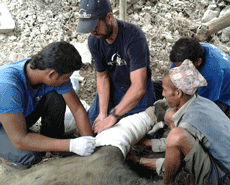
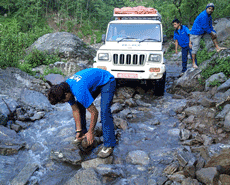
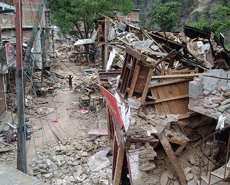
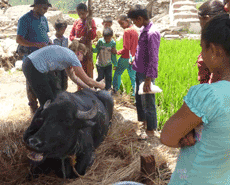
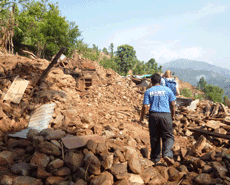
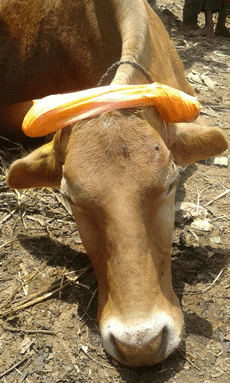 Pre-earthquake
Work with the mass anti-rabies vaccination programmes in Pokhara and Bharatpur was proceeding well. Clinics were open and taking in animals brought for treatment whilst continuing the neutering campaign.
Pre-earthquake
Work with the mass anti-rabies vaccination programmes in Pokhara and Bharatpur was proceeding well. Clinics were open and taking in animals brought for treatment whilst continuing the neutering campaign.
The work scheduling in the newly added wards of Pokhara and Bharatpur was under discussion.
25th April
The earthquake struck just after noon. As this was a Saturday no staff were working and the first priority was to ascertain that all were OK. Once this was established the next priority was to establish the extent of damage to animals in Pokhara and Bharatpur.
A survey on 27th April showed that both areas were relatively unscathed. Dogs and cats had been able to run from trouble and structural damage was confined to a few areas. Our own clinics were undamaged.
Strategy
Co-founders Khageshwaar, Barbara and Jim decided that HART would liaise with local District Livestock Services Office (DLSO) and offer assistance in areas as requested. DLSO's have sub branches within the districts and, if communications work, are best placed to determine animal needs.
A number of international animal welfare NGOs deployed teams to Kathmandu and worked alongside the groups there, ensuring that the Kathmandu valley was well covered.
Initial relief missions
On 1st May we sent a relief vehicle from Pokhara to the area north of Gorkha and another from Bharatpur to the Dhading region acting in response to DLSO calls and private information including emails received from overseas.
The full stories of these trips are on Facebook www.facebook.com/hartnepal
These were frightening and dangerous journeys and we are immensely proud to be associated with the staff who made them.
Further decisions
After the first relief trips it was clear that there were few earthquake related injuries to cats and dogs even in areas otherwise devastated.
However many livestock animals had suffered with cases ranging from broken backs and legs to minor wounds.
HART is not expert in livestock services but could offer basic aid and consultation when there was no other alternative for the farmers.
Some owners were clearly in shock and were offered advice on care for their animals even if they had not been physically harmed.
Further missions
The Bharatpur team left on a second mission to Nuwakot and Dhading on 5th May, accompanied by volunteer vets and volunteer vet students. They visited as many villages as possible in the area, treating about 250 animals before returning to base.
On 9th May they set out again to villages in the Lamjung region where they remained until 14th.
The Pokhara team travelled to Sindupalchowk on 8th May having met up with volunteer experts, Dr Ben Brown, Dr John Skuja and Dr Springer Browne as well as GP Dahal.
Livestock treatment continued until 12th May when a second major earthquake struck Nepal.
Although escaping serious injury, the team decided to return to base and regroup after this added blow.
Continuity
Again the decision was made to continue offering relief missions, particularly in view of the substantial further damage caused by the second quake.
The Pokhara team returned to Sindupalchowk on 21st May, this time with a second vehicle organised by AWNN and volunteers Dr Cate Sutton, Dr Donald Hudson, Dr Mahima Gupta and, once again, GP Dahal.
Further treatments and follow-up work was carried out. The farmers showed such relief on the return of the animal welfare teams that we have promised to return.
Meanwhile the Bharatpur team left for Dolakha, another inaccessible and badly hit region, on 17th May. They had an especially difficult journey threatened by landslides as aftershocks continued. They were the first vet team to reach the area but were delighted to find the majority of animals were OK. Even so, they treated around 500 with pain relief, dewormers and other medications before returning to base.
This team is currently on a final follow-up to Gorkha and, on return, will take a short rest and then resume normal work.
Normality
Like everyone in Nepal, all at HART are longing to return to the routine of our everyday campaigns and programmes.
The strength and professionalism of our staff have been beyond any possible expectation. We now look forward to continuing to work together.
Thank you from all at HART for your wonderful support at this difficult time
 
Very many thanks for your continued support
www.hartnepal.org
If you would like more information about our work, please visit our website or contact our Director, Mr Khageshwaar Sharma, at k.sharma@hartnepal.org
|
|